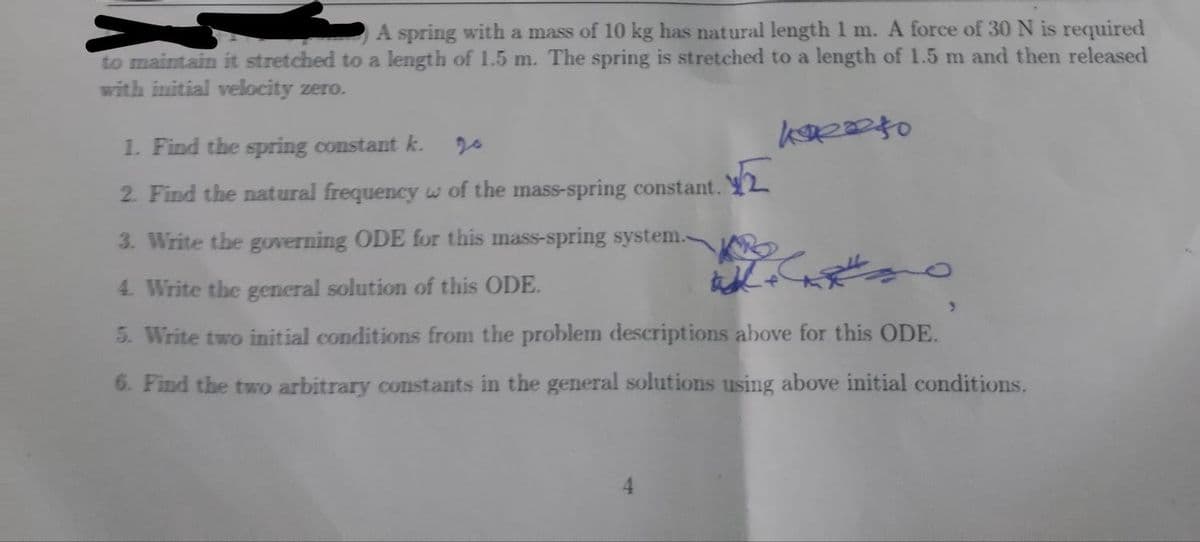A spring with a mass of 10 kg has natural length 1 m. A force of 30 N is required to maintain it stretched to a length of 1.5 m. The spring is stretched to a length of 1.5 m and then released with initial velocity zero. 1. Find the spring constant k. 20 2. Find the natural frequency w of the mass-spring constant. 3. Write the governing ODE for this mass-spring system.- 4. Write the general solution of this ODE. 5. Write two initial conditions from the problem descriptions above for this ODE. 6. Find the two arbitrary constants in the general solutions using above initial conditions.
Simple harmonic motion
Simple harmonic motion is a type of periodic motion in which an object undergoes oscillatory motion. The restoring force exerted by the object exhibiting SHM is proportional to the displacement from the equilibrium position. The force is directed towards the mean position. We see many examples of SHM around us, common ones are the motion of a pendulum, spring and vibration of strings in musical instruments, and so on.
Simple Pendulum
A simple pendulum comprises a heavy mass (called bob) attached to one end of the weightless and flexible string.
Oscillation
In Physics, oscillation means a repetitive motion that happens in a variation with respect to time. There is usually a central value, where the object would be at rest. Additionally, there are two or more positions between which the repetitive motion takes place. In mathematics, oscillations can also be described as vibrations. The most common examples of oscillation that is seen in daily lives include the alternating current (AC) or the motion of a moving pendulum.
please solve all the parts

Trending now
This is a popular solution!
Step by step
Solved in 4 steps




